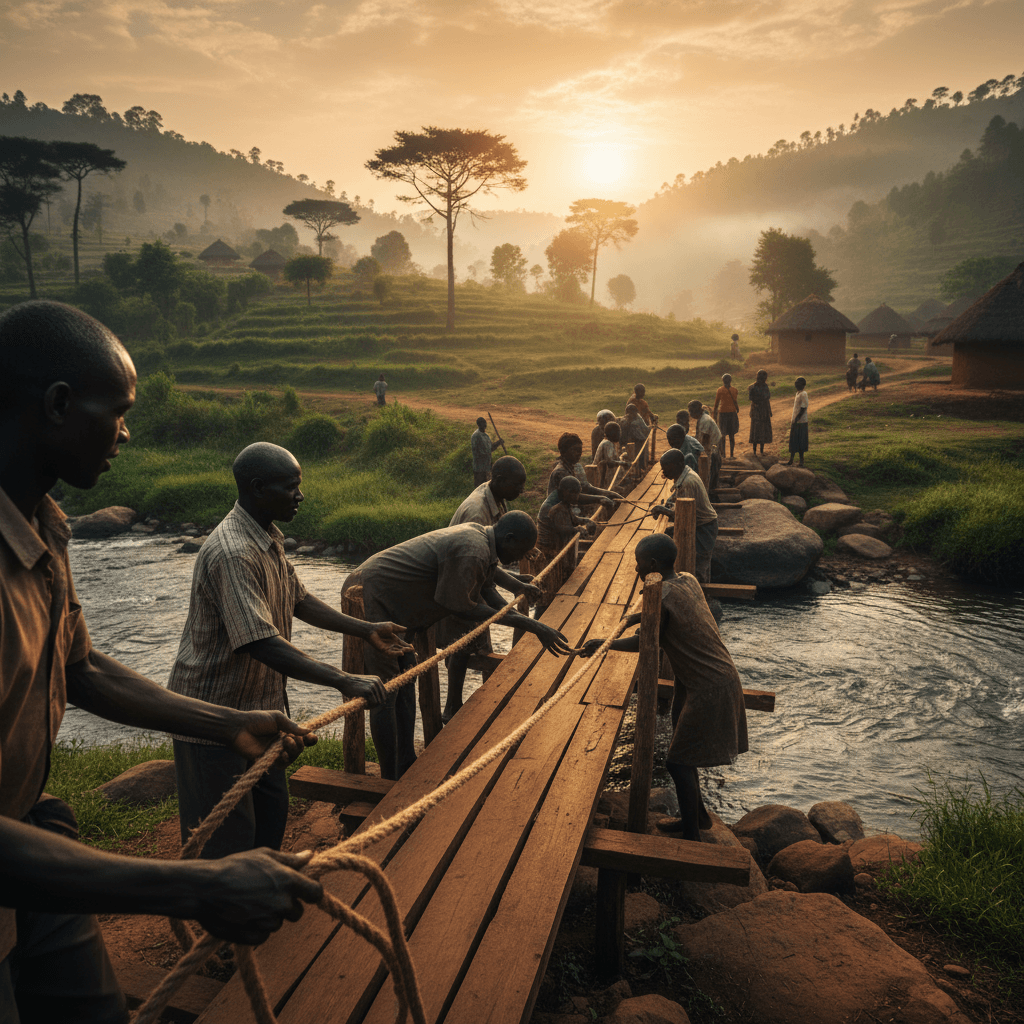Bridges That Endure: Work, Care, and People

Build bridges through work and care; they last when built for people. — Wangari Maathai
A Human-Centered Definition of Bridges
Wangari Maathai’s line reframes bridges as more than steel or stone. They are relationships, institutions, and pathways that connect lives—constructed through diligent work and sustained by care. Crucially, they last only when they serve people, not vanity metrics or abstract plans. In this sense, durability is a social outcome: structures persist when communities see themselves in them and feel responsible for their upkeep.
The Green Belt Movement as Proof
From principle to practice, Maathai’s Green Belt Movement (founded 1977) showed how care and labor knit communities together. Women organized nurseries, planted millions of trees, and restored watersheds while earning income—linking ecology to dignity and daily needs. In Unbowed: A Memoir (2006) and The Green Belt Movement (2003), Maathai recounts how local ownership turned tree-planting into civic infrastructure. Because seedlings were raised, planted, and protected by the people who depended on them, the forests—and the social bonds—endured.
Governance Lessons on What Lasts
Building on those community lessons, research on collective action clarifies why people-first projects persist. Elinor Ostrom’s Governing the Commons (1990) shows that shared resources thrive when users craft rules, monitor use, and sanction fairly. Irrigation associations and community forests succeed not by decree but by participation. The implication is simple: bridges last when the people who cross them helped design the guardrails and can repair them when they fray.
Designing with Care, Not Just Competence
Extending this logic to design, care is not sentimentality; it is a method. Don Norman’s The Design of Everyday Things (2013) argues for user-centered design, while Carol Gilligan’s In a Different Voice (1982) elevates care as an ethical framework attentive to context and relationships. Together they suggest that excellence requires empathy: listen first, then build. When projects reflect real routes—what urbanists call desire lines, highlighted in Jan Gehl’s Cities for People (2010)—use deepens and maintenance follows.
Social Bridges: Forests, Protests, and Freedom
Moreover, Maathai’s bridges were social long before they were physical. In 1992 she joined mothers at Nairobi’s Freedom Corner, pressing for political prisoners’ release; the vigil connected families, activists, and the public sphere (Unbowed, 2006). Later, the defense of Karura Forest (1998–1999) united informal settlers, students, and professionals against elite land grabs. Such alliances showed that when a cause is built for people—clean air, safety, dignity—diverse groups will cross the bridge together and keep it standing.
Maintenance as a Community Ritual
Finally, endurance depends on ongoing care. The Q’eswachaka grass suspension bridge in Peru is rebuilt annually by local communities, a practice recognized by UNESCO’s Intangible Cultural Heritage list (2013). The structure survives because the tradition survives; maintenance is not outsourced but celebrated. Likewise, Maathai’s approach turned stewardship into habit—watering seedlings, auditing survival rates, and sharing techniques—so the bridge between environment and livelihood could renew itself season after season.